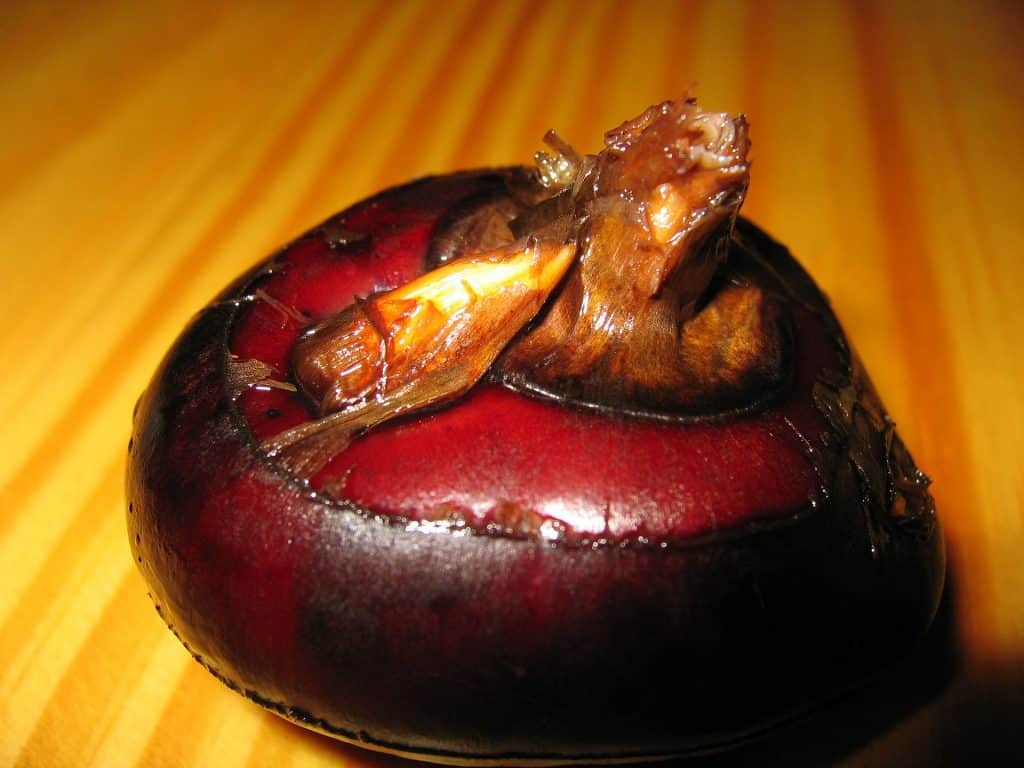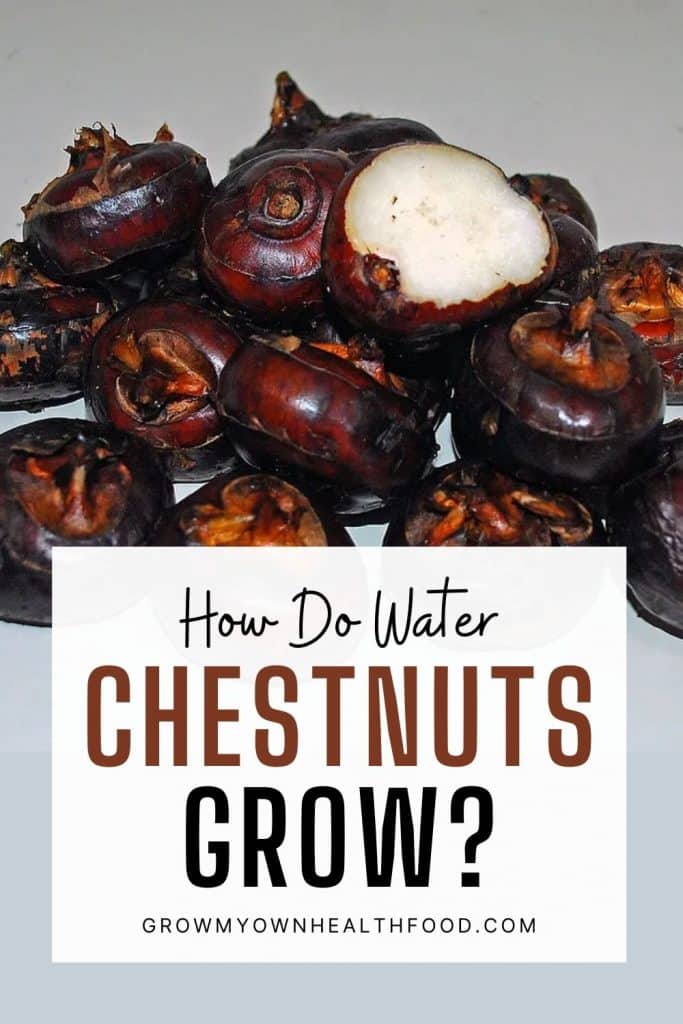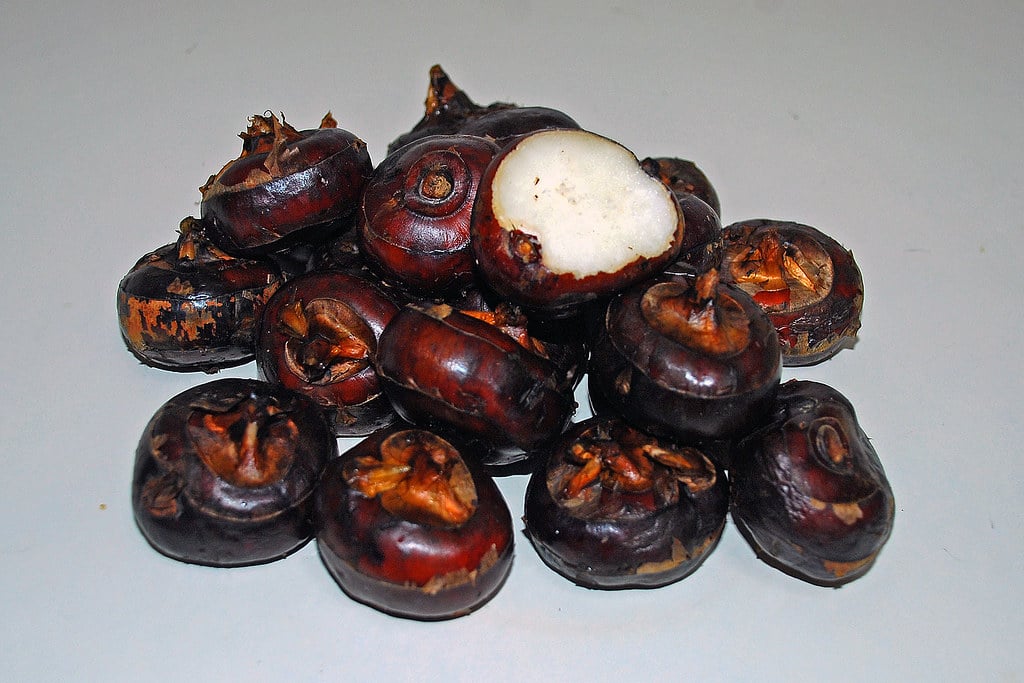Many people know water chestnuts as the crunchy, white, and mildly sweet additions to Chinese cuisine. But just like any other food, canned water chestnuts cannot beat the taste of their fresh counterparts. While they are available at specialty groceries, a great way to get fresh water chestnuts is to grow water chestnuts at your home.
Growing water chestnuts in your house is a great way to save money. At the same time, they can also act as houseplants! It is not difficult to grow water chestnuts. With some basic information, anyone can grow their own water chestnuts at home!
What are Water Chestnuts?

Water chestnuts are grass-like plants that are native to Asian countries and are also sometimes found in the Pacific and Indian Ocean islands. Water chestnuts are extremely useful plants. Not only are they used in cooking but are also full of nutrients and have tremendous health benefits. While the name may imply it, water chestnut is not actually a nut. It is an aquatic vegetable that grows underwater in muddy and marshy areas. You will often find water in ponds as they provide an excellent environment for growing water chestnuts.
Benefits of Water Chestnuts
Water chestnuts are an excellent source of antioxidants that protect the body against several diseases and disorders. Water chestnuts have low calories and can help you control hunger, which makes them ideal for people who are on a diet. They are also rich in fiber, which is why they improve digestive health. Due to the presence of zinc, potassium, B vitamins, and vitamin E, water chestnuts are amazing for your hair.
Culinary Uses of Water Chestnuts
Water chestnuts are also quite popular in Chinese dishes. The small and round corms cut from the chestnuts are eaten raw or cooked and are also often fed to cattle. Water chestnuts have a sweet and crisp taste when they are raw. Cooking the chestnuts gives them a crunchy texture with a mild nutty flavor that goes well with a variety of spices and sauces.
There are various ways water chestnuts are consumed. Once your water chestnuts grow, you will have a useful cooking ingredient at your disposal at any time of the day! You can slice water chestnuts or grate them and they can be eaten raw, fried, or grilled. You can also add chestnuts to stir-fried dishes, casseroles, salads, and omelets. Because of the antioxidants and vitamins in water chestnuts, you can add a few to your smoothie. Some people also enjoy pickled water chestnuts.
Types of Water Chestnuts
Before you go on to grow any water chestnuts, you should be aware if they are edible or inedible. While the Chinese water chestnuts are edible and are widely used in cooking, the Trapa Water Chestnuts are inedible and invasive. Needless to say, the plants you should be getting are the Chinese water chestnuts. They are easy to grow in ponds or water-filled containers and are also edible. You can get these water chestnuts from any supermarket or order online. Etsy provides a variety of such water chestnuts seeds that you can plant.
How do Water Chestnuts Grow
Here is a step-by-step guide to how you can grow water chestnuts on your own!
1. Find a container
- Sturdy Fabric Material: Made of 300g of thickened nonwoven fabric, these pots are moderately permeable, and BPA-free
- Great Drainage: Nonwoven fabric means the pots do not retain excess water, allowing your roots to breathe for healthier, more vigorous growth
- Durable, Reinforced Handles: While the competition uses flimsy handles that are merely strips of the same fabric the pot is made from, we use serger stitches to sew handles onto the pot so they can support a full bag of soil
Prices pulled from the Amazon Product Advertising API on:
Product prices and availability are accurate as of the date/time indicated and are subject to change. Any price and availability information displayed on [relevant Amazon Site(s), as applicable] at the time of purchase will apply to the purchase of this product.
To grow water chestnuts, you will need a container, water, and potting soil. You can use any type of potting mix as its purpose is to keep the plant in place. Water chestnuts are like aquatic potatoes so the bigger the container you get, the more corms you will have.
- Blended for a wide variety of container plants
- Feeds up to 6 months
- Designed to be less prone to gnats (Contains no compost or bark, which are known to shelter fungus gnats)
Prices pulled from the Amazon Product Advertising API on:
Product prices and availability are accurate as of the date/time indicated and are subject to change. Any price and availability information displayed on [relevant Amazon Site(s), as applicable] at the time of purchase will apply to the purchase of this product.
The first step is to put the soil in the bucket and put the water chestnut seeds inside the dirt. You can also add fertilizer to the soil to improve the supply of nutrients to the plant. After that, fill the entire container with water. Make sure that you plant the seeds deep in the soil so they do not float in water as you fill the container. The water level should be at least 4 inches above the soil. Initially, the green goo will appear on the top of the water, which is natural. Just scoop off the goo as it appears. Until the corms are ready to harvest, you should maintain the water level in the container.
- STRONGER ROOT DEVELOPMENT: Bone Meal is a natural source of vital, readily available organic nitrogen, phosphorus and calcium.
- ADD TO SOIL: Add to soil or potting mix during seed starting or at any time prior to harvest to fuel strong roots and early, healthy plant growth.
- ORGANIC CERTIFIED: OMRI listed for organic gardening, Bone Meal is ideal for new bedding plants.
Prices pulled from the Amazon Product Advertising API on:
Product prices and availability are accurate as of the date/time indicated and are subject to change. Any price and availability information displayed on [relevant Amazon Site(s), as applicable] at the time of purchase will apply to the purchase of this product.
2. Keep the Bugs at Bay
Just like any other plant, growing water chestnuts will need some precautions and care. Standing water can breed mosquitoes and this threat is doubled when you are growing water chestnuts plants. You and your plant are better off without the mosquitos, which is why a precaution or two will not hurt. There are some recommended ways that can keep the mosquitos from laying eggs in your container. Some people drop a small fish in the water container. While the solution is pretty basic, if you have a cat around the house we do not recommend this method. Another way to protect your container from mosquitos is by making a frame over your container. You can then put mosquito netting over the frame which will keep the mosquitos outside.
3. Harvesting Water Chestnuts
Once you plant your seeds, it can take about 7 to 8 months till they are ready for harvesting. Near the end of the timeline, the leaves will begin to turn yellow. This is an indication that they are almost ready to harvest. Slowly, the tops of the plant will begin to turn brown. At this stage, gradually begin to reduce the amount of water to prevent the chestnuts from rotting before the harvest. Once the plant stems are dead, it means you can harvest the chestnuts. You will usually find the corms in the top 10cm of the soil. If you are living in a cooler zone, it would be a better idea to bring the water chestnuts indoors in a sunny spot so the leaves can turn brown. While the water chestnuts can tolerate a little frost, it is better not to risk it!
Avoid Damaging
While you are harvesting your water chestnuts in a container, do the job with hand to avoid any damage to your skins. Many of the chestnuts will still be attached to the stems so you will need to be careful while removing them. After you have collected the chestnuts, wash them to remove dirt and debris on them. If you do not want to harvest at this point, you can remove the dead leaves and leave the corms under the soil for the cooler months. However, they will start to shoot again as soon as spring arrives.
The Joy of Growing Water Chestnuts in your Home
Some people want to grow water chestnuts for the simple pleasure of gardening. Others will grow water chestnuts especially to enjoy the unique flavor of this vegetable. Whichever group of people you belong to, you will find the entire process of growing water chestnuts highly enjoyable. Not only will you get fresh vegetables, but while your water chestnuts grow, they will elevate the beauty of your garden. Once you have grown the water chestnuts, you will definitely want to continue this routine the next season as well!










